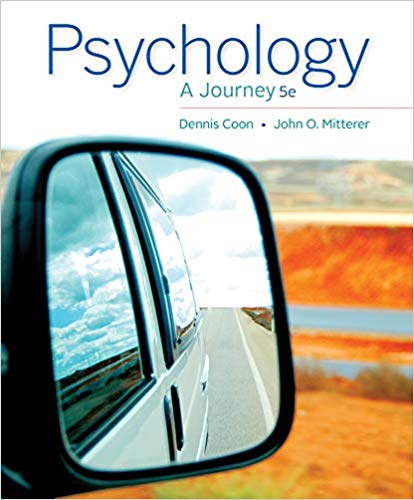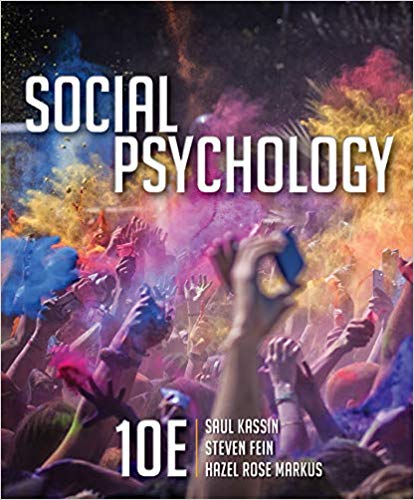Psychology Applied to Teaching 13th Edition International by Jack Snowman – Test Bank
Chapter 5: Addressing Cultural and Socioeconomic Diversity
MULTIPLE CHOICE
1. Which of the following is most consistent with the concept of cultural pluralism?
|
a. |
All cultures within a society should be maintained and respected by others. |
|
b. |
A national goal of the United States should be to assimilate our many cultural groups into the national mainstream. |
|
c. |
All cultures are basically the same and should be considered equal. |
|
d. |
Different cultures have their own beliefs and behavioral norms, but cultural values are universal. |
ANS: AREF:144
NOTE: The three beliefs that underlie cultural pluralism are that every society should maintain its different cultures, each culture within a society should be respected by individuals from other cultures, and individuals within a society should not have to give up their cultural identity to participate in all aspects of society.
2. The concept of cultural pluralism holds that
|
a. |
all cultures are the same and should be considered equal. |
|
b. |
people can rise above their particular culture and become culture-free. |
|
c. |
all cultures within a society should be respected by all members of that society. |
|
d. |
different cultures have their own beliefs and behavioral norms, but cultural values are universal. |
ANS:CREF:144
NOT: One of the basic beliefs that underlies cultural pluralism is the idea that all individuals within a society should respect all of the cultures of that society.
3. Which of the following statements about cultural diversity in the United States is true?
|
a. |
Cultural diversity is decreasing because of changing immigration laws. |
|
b. |
Cultural diversity is increasing because of increasing numbers of Asian Americans, but the number of Latinos/Latinas is decreasing because of immigration restrictions. |
|
c. |
Cultural diversity is decreasing because of decreasing birthrates among immigrants. |
|
d. |
Cultural diversity is increasing because of changes in immigration and birthrates among immigrants. |
ANS:DREF:146-147
NOT:On pages 146-147 of the text, there is a discussion of the changing ethnic composition of the United States. A decline of the melting pot philosophy and a rise of cultural pluralism have occurred to a large degree because of the increasing cultural diversity in the United States, which in turn has resulted from changes in immigration and birthrates among immigrants.
4. What can be said about the numbers and ethnic origins of the population of the United States as the twenty-first century begins?
|
a. |
The United States is becoming less culturally diverse because of policies originating in the 1960s to restrict immigration |
|
b. |
The United States is becoming less culturally diverse because the birthrates of Asian and European immigrants have declined. |
|
c. |
The United States is becoming more culturally diverse because immigration and the birthrates of immigrants have increased. |
|
d. |
The ethnic makeup of the population is much the same as in the mid-1970s and is expected to remain that way, with the exception of a gradual decrease in the number of Latino/Latina children. |
ANS:CREF:146-147
NOT: The authors suggest that the United States is becoming more multicultural because of changes in immigration and birthrates.
5. Which of the following does not reflect an ethnocentric belief?
|
a. |
All children require adequate nutrition in order to develop properly. |
|
b. |
Christianity is the most acceptable form of religion because of the values it espouses. |
|
c. |
English is the only important language in the school system. |
|
d. |
Meat is the only acceptable form of protein in the school lunch program. |
ANS:AREF:147
NOT: All options except for the correct option exhibit a lack of tolerance for beliefs or attitudes of people from other cultures (i.e., ethnocentrism). The correct option reflects not a cultural issue but a nutritional one. The requirement for good nutrition crosses all cultural boundaries.
6. All of the following statements reflect an ethnocentric perspective except
|
a. |
We will not consider using vegetables or soy products as acceptable sources of protein in the school lunch program. |
|
b. |
All foreign students should pass English proficiency tests before being allowed to attend public school. |
|
c. |
We will not study Central and South American history, since it isn’t part of the curriculum. |
|
d. |
All students require adequate nutrition in order to develop properly. |
ANS:DREF:147
NOT: All options except the correct option exhibit a lack of tolerance for beliefs, attitudes, or ways of life of people from other cultures (i.e., ethnocentrism). The correct option reflects not a cultural issue, but a nutritional one. The requirement for good nutrition crosses all cultural boundaries.
7. Which of the following is not likely to be a characteristic that identifies someone as being from a different culture?
|
a. |
the belief a person has about what happens when we die |
|
b. |
the size of a person’s frame and the color of the person’s skin |
|
c. |
the behavior a person exhibits around family elders |
|
d. |
the attitude a wife has toward her husband |
ANS:BREF:148
NOT: The authors point out that a culture is defined by the way a group of people thinks, believes, behaves, and perceives the world. These characteristics reflected in the incorrect options, can identify someone as being from a different culture. Presently the United States is so ethnically diverse that people of many different ethnic origins can be said to have the same culture. We may be hard pressed to identify third-generation Japanese-American students as anything but American.














Reviews
There are no reviews yet.